Thingiverse
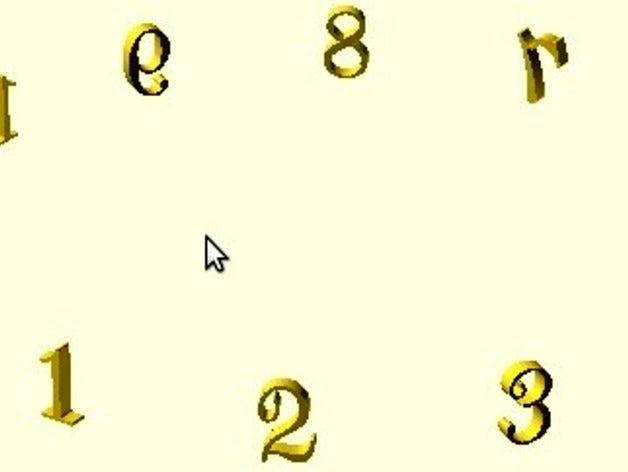
Happy Numbers 0.2 by donb
by Thingiverse
Last crawled date: 3 years ago
Happy Numbers 0.2 is a number system for use in OpenSCAD. I am releasing it into the Public Domain, so you can use and modify it completely freely.
Most OpenSCAD number sets on thingiverse consist of a separate .dxf file for each number. Happy Numbers works differently.
There is a single .svg file that contains a set of numbers in a grid of 'character boxes'. This .svg file has been converted to a .dxf file. Then, in OpenSCAD, you call the char() module; it 'selects' the number you want by using an 'intersection box'. char(1) is the first number, char(2) is the second number, and so on. Thus you can:
Change the font more easilyMake your own number sets more easily
*Use numbers in scripts in new and creative ways
Currently it has numbers for these scripts/fonts:Arabic (LMRomansUnsl10 - sorta resembles Nixie tubes)ChineseDevanagari (Hindi, Sanskrit)Tengwar (Tolkien's Lord of the Rings)Braille
If you have any questions, feel free to ask.
Making new numbers with your own fonts
If you just want to use this, you can skip down to 'Instructions'. But if you want to make your own kind of numbers, here is the method I used to make this thing.
Step 1. Getting an .svg and then saving as .dxf
The first step is getting the numbers.svg file to have the font you want. This can be as easy as opening up Inkscape and typing the numbers out. Or you could draw the numbers yourself, or find some on the web; as long as they are 'outline' shapes, it should work.
To do the process in Inkscape, here are the basic steps:
Open the numbers.svg file
0.1 Go to 'layers' and 'hide' the 'Grid' layer
0.5 Delete old numbers text
Create new numbers text
Select all of the new text
Click Path/Object to Path
Click Path/Break Apart
Click Object/Ungroup
For each character do the following:
6.1 Select the character
6.2 Click "Edit Paths by Nodes" tool
6.3 Hit Ctrl-A (select all nodes)
6.4 Hit the 'insert node' button 2-3 times (slow)
6.5 Hit the 'make straight paths' button
Go to 'layers' and 'show' the 'Grid' layer
Move each number so it fits in one grid box
Go to 'layers' and 'hide' the 'Grid' layer
File/Save-As/DXF
There is a great tutorial here (I skip the 'document properties' step):
http://repraprip.blogspot.com/2011/05/inkscape-to-openscad-dxf-tutorial.html
Step 2. Check alignment
The char() module has some parameters related to the DXF file. They include the x & y offsets to the first 'character box', and the width and height of the character boxes. You may need to check and tweak these if you change the font or characters. This can be done by running the adjustment_table() module and then manually tweaking the settings in char(). Example screenshots have been attached to this project; there are two screenshots with 'unaligned' settings, and one screenshot with 'aligned' settings.
Example
An example usage of these numbers is here, in my TeeTotum:
http://www.thingiverse.com/thing:8690
References
Arabic, Chinese, Devanagari, Braille:
Ubuntu Linux, Wikipedia, google image search
Tengwar:
http://www.acondia.com/fonts/tengwar/info/numbers.htmhttp://freetengwar.sourceforge.net/
Bugs & Drawbacks
The numbers are currently only 1 through 12. You have to 'manually create' anything larger.
These are not 'scalable' - they are made out of small line segments. If you blow them up too big they will be 'chunky'.
In Openscad, if you don't have GL2 or whatever, the full array of numbers shows up in the preview, not just the char() you choose, making it confusing. When rendered, though, it comes out properly.
Braille is not 'bubbled', it's flat cylinders.
The Tengwar dxf file is too tall, fix with charh=9 (see scad code)
There is no 'size' parameter; you have to use scale().
Using adjustment_table() with GL2 might be confusing
Most OpenSCAD number sets on thingiverse consist of a separate .dxf file for each number. Happy Numbers works differently.
There is a single .svg file that contains a set of numbers in a grid of 'character boxes'. This .svg file has been converted to a .dxf file. Then, in OpenSCAD, you call the char() module; it 'selects' the number you want by using an 'intersection box'. char(1) is the first number, char(2) is the second number, and so on. Thus you can:
Change the font more easilyMake your own number sets more easily
*Use numbers in scripts in new and creative ways
Currently it has numbers for these scripts/fonts:Arabic (LMRomansUnsl10 - sorta resembles Nixie tubes)ChineseDevanagari (Hindi, Sanskrit)Tengwar (Tolkien's Lord of the Rings)Braille
If you have any questions, feel free to ask.
Making new numbers with your own fonts
If you just want to use this, you can skip down to 'Instructions'. But if you want to make your own kind of numbers, here is the method I used to make this thing.
Step 1. Getting an .svg and then saving as .dxf
The first step is getting the numbers.svg file to have the font you want. This can be as easy as opening up Inkscape and typing the numbers out. Or you could draw the numbers yourself, or find some on the web; as long as they are 'outline' shapes, it should work.
To do the process in Inkscape, here are the basic steps:
Open the numbers.svg file
0.1 Go to 'layers' and 'hide' the 'Grid' layer
0.5 Delete old numbers text
Create new numbers text
Select all of the new text
Click Path/Object to Path
Click Path/Break Apart
Click Object/Ungroup
For each character do the following:
6.1 Select the character
6.2 Click "Edit Paths by Nodes" tool
6.3 Hit Ctrl-A (select all nodes)
6.4 Hit the 'insert node' button 2-3 times (slow)
6.5 Hit the 'make straight paths' button
Go to 'layers' and 'show' the 'Grid' layer
Move each number so it fits in one grid box
Go to 'layers' and 'hide' the 'Grid' layer
File/Save-As/DXF
There is a great tutorial here (I skip the 'document properties' step):
http://repraprip.blogspot.com/2011/05/inkscape-to-openscad-dxf-tutorial.html
Step 2. Check alignment
The char() module has some parameters related to the DXF file. They include the x & y offsets to the first 'character box', and the width and height of the character boxes. You may need to check and tweak these if you change the font or characters. This can be done by running the adjustment_table() module and then manually tweaking the settings in char(). Example screenshots have been attached to this project; there are two screenshots with 'unaligned' settings, and one screenshot with 'aligned' settings.
Example
An example usage of these numbers is here, in my TeeTotum:
http://www.thingiverse.com/thing:8690
References
Arabic, Chinese, Devanagari, Braille:
Ubuntu Linux, Wikipedia, google image search
Tengwar:
http://www.acondia.com/fonts/tengwar/info/numbers.htmhttp://freetengwar.sourceforge.net/
Bugs & Drawbacks
The numbers are currently only 1 through 12. You have to 'manually create' anything larger.
These are not 'scalable' - they are made out of small line segments. If you blow them up too big they will be 'chunky'.
In Openscad, if you don't have GL2 or whatever, the full array of numbers shows up in the preview, not just the char() you choose, making it confusing. When rendered, though, it comes out properly.
Braille is not 'bubbled', it's flat cylinders.
The Tengwar dxf file is too tall, fix with charh=9 (see scad code)
There is no 'size' parameter; you have to use scale().
Using adjustment_table() with GL2 might be confusing
Similar models
thingiverse
free
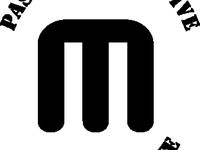
Inkscape to OpenSCAD converter by dnewman
...ath: inkscape already does the proper combining.)
15 june 2012: corrected windows issue with handling of unix-style file paths.
thingiverse
free

Inkscape to OpenSCAD converter v6 by dnewman
...terminate called after throwing an instance of 'std::logic_error' what(): basic_string::_s_construct null not valid"
thingiverse
free

Inkscape OpenSCAD DXF Export by polymaker
...adds "total_minx", "total_maxx", "total_miny" and "total_maxy" as well as similar dims for each layer named "layername_minx" and so on....
thingiverse
free

Inkscape font4OpenSCAD extension by sawdusty
...le) for openscad and the write extension. some manual work is necessary in inkscape to finish the process, but it's worth it.
thingiverse
free

Flower Power Necklace by schlotzz
...e. i exported the layer as dxf-file, which is used in openscad for linear extrusion. maybe you prefer working with the sources...
thingiverse
free
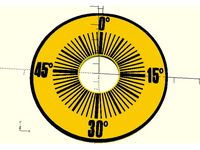
Ikari Warriors Dust Washer by PL1
...w .stl file into your slicer program
check the top layer path after slicing to be sure the fine lines aren't missing.
scott
thingiverse
free
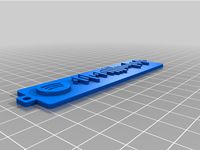
Spotify Code generator by AILR16
... the material (for this add a pause in the gcode).
there are two examples of codes :-)
for a better explanation, watch the video.
thingiverse
free

OC6000 joystick case replacement by Zigazou
...’s profile,
the profiles are then extruded by rotation in openscad,
small parts and hole are finally added by coding in openscad.
thingiverse
free
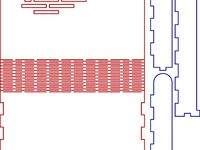
Flex Box remix by drphonon
...ed them in the .svg file and added layers and colors to allow selective cutting of the pieces. thanks to 4volt for a nice design!
thingiverse
free

Nut Handle by ebredder
...cnc using 1/4-20 threaded rod, jamb nut, and .2" birch plywood.
dxf three layers from openscad
svg for inkscape of all parts
Donb
thingiverse
free

Donbe & Hikari - Melee trophy by Milun
...and 3mm diameter to elevate donbe. if you don't have access to one of those, a simple wooden skewer will fit in just as good.
thingiverse
free
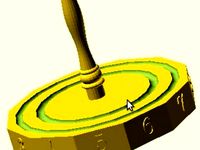
Teetotum by donb
...as made some dreidels! (sorta like a 4-sided teetotum)
http://www.thingiverse.com/thing:4922http://www.thingiverse.com/thing:1421
thingiverse
free

Drafont 0.5 by donb
...le 'ranges' of unicodes to be dumped. use 'advance' from font
0.3 move openscad code
0.2 fix chunking
0.1 started
thingiverse
free
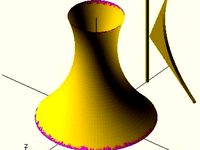
OpenSCAD Conic Bezier Curve by donb
...e. a conic section). please see wikipedia for more info.
conic arc bã©zier curves (3 control points) are used by truetype fonts.
thingiverse
free
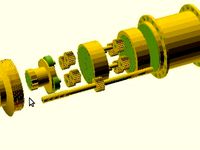
alpha parts of three speed bicycle hub by donb
... public domain, discussing the expiration dates for copyright. it is here:http://copyright.cornell.edu/resources/publicdomain.cfm
thingiverse
free

OpenSCAD Conic Bezier Curve – no warnings / for newer versions by flomei
...flomei thingiverse the original conic bezier curve module by donb is causing warnings because it uses the deprecated assign()...
thingiverse
free
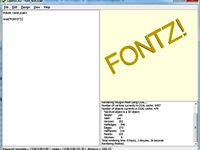
OpenSCAD Font Importer 1.1 by pipakin
...layout full strings for a project so i extended donb#39;s wonderful drafont library. this version will dump all ascii...
thingiverse
free

SuperEllipse in OpenScad by WilliamAAdams
...superellipse in openscad by williamaadams thingiverse donb (http://www.thingiverse.com/donb sent me a message recently about the superformula (en.wikipedia.org/wiki/superformula)...
thingiverse
free

OpenSCAD Font Importer by pipakin
...layout full strings for a project so i extended donb#39;s wonderful drafont library. this version will dump all ascii...
Happy
3ddd
$1

Ковер Happy
...ковер happy
3ddd
ковер happy
3d_export
$5

happy crab
...happy crab
3dexport
simple model of a happy and whiskered crab)
3ddd
$1
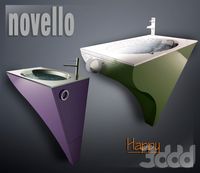
NOVELLO / Happy
...novello / happy
3ddd
novello
итальянский умывальник фирмы novello модкль happy
3ddd
$1
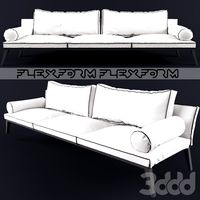
Flexform HAPPY
...изводителя:http://www.flexform.it/flexform/en/product/sofas-sectional-sofas/happy/39e9c419-4d84-43d0-b983-3492161621d5#
3d_ocean
$8

Happy Snowman
...d smuggledtea snow snowman yellow
snowman and gifts animated… sad snowman would be happy when gifts fallen down happy new years…
design_connected
$11
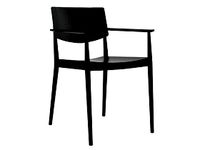
Happy Armchair
...happy armchair
designconnected
andreu world happy armchair computer generated 3d model. designed by lievore, alberto.
3ddd
$1

Nicoline HAPPY
... poltrona girevole
кресло nicoline picolla sartoria happy poltrona girevole, текстуры присутствуют.
3d_ocean
$5

happy fish
...happy fish
3docean
base fish happy lowpoly mesh
low poly model of a fish. this is just a base model without texture.
turbosquid
free

Happy bear
...bear
turbosquid
free 3d model happy bear for download as max on turbosquid: 3d models for games, architecture, videos. (1253463)
turbosquid
$60

Happy Buddha
...squid
royalty free 3d model happy buddha for download as obj on turbosquid: 3d models for games, architecture, videos. (1384422)
Numbers
3d_ocean
$3

Numbers
...numbers
3docean
3d animation models numbers oder set
3d, models,numbers,animations,create
turbosquid
$16

numbers
...turbosquid
royalty free 3d model numbers for download as max on turbosquid: 3d models for games, architecture, videos. (1381045)
turbosquid
$1

Numbers
...turbosquid
royalty free 3d model numbers for download as fbx on turbosquid: 3d models for games, architecture, videos. (1355258)
turbosquid
$25

Numbers
... available on turbo squid, the world's leading provider of digital 3d models for visualization, films, television, and games.
3d_export
$10
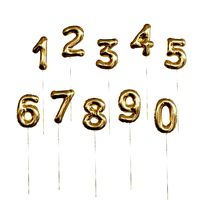
balloons numbers
...balloons numbers
3dexport
inflatable foil balloons. numbers. height is about 100 cm.
3ddd
$1

Pouf Number
...pouf number
3ddd
пуф
pouf number - i hope you like it and thank you !
turbosquid
$99

Countdown Numbers
...
royalty free 3d model countdown numbers for download as fbx on turbosquid: 3d models for games, architecture, videos. (1163282)
turbosquid
$8

Registration number
...royalty free 3d model registration number for download as max on turbosquid: 3d models for games, architecture, videos. (1314675)
turbosquid
$5
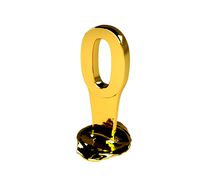
Number Zero
...osquid
royalty free 3d model number zero for download as max on turbosquid: 3d models for games, architecture, videos. (1409080)
turbosquid
$1

Number Placard
...uid
royalty free 3d model number placard for download as fbx on turbosquid: 3d models for games, architecture, videos. (1315126)
0
turbosquid
$12

Calligraphic Digit 0 Number 0
...hic digit 0 number 0 for download as max, obj, fbx, and blend on turbosquid: 3d models for games, architecture, videos. (1389318)
3d_export
$6
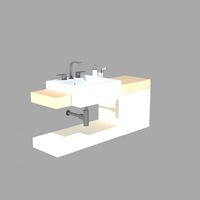
set-0
...set-0
3dexport
turbosquid
$6
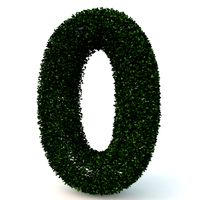
hedge 0
...yalty free 3d model hedge 0 for download as max, obj, and fbx on turbosquid: 3d models for games, architecture, videos. (1450353)
turbosquid
$5

Nuber 0
...oyalty free 3d model nuber 0 for download as ma, obj, and fbx on turbosquid: 3d models for games, architecture, videos. (1564674)
turbosquid
$22
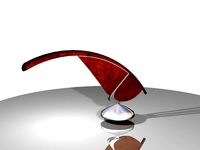
0.jpg
... available on turbo squid, the world's leading provider of digital 3d models for visualization, films, television, and games.
turbosquid
free

Steam Locomotive Fowler 4F 0-6-0
... available on turbo squid, the world's leading provider of digital 3d models for visualization, films, television, and games.
turbosquid
$10

Liquid Number 0
... model liquid number 0 for download as c4d, 3ds, fbx, and obj on turbosquid: 3d models for games, architecture, videos. (1689919)
turbosquid
$45
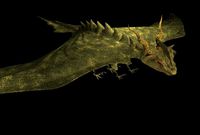
Dragon360_perspShape_tmp.0.jpg
... available on turbo squid, the world's leading provider of digital 3d models for visualization, films, television, and games.
turbosquid
$8
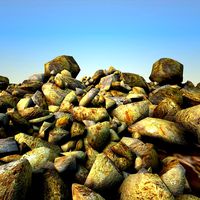
Rocks Debris 0
... available on turbo squid, the world's leading provider of digital 3d models for visualization, films, television, and games.
3d_export
$18
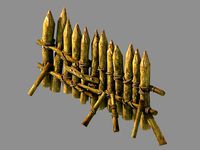
wood-guardrail-fence 0
...wood-guardrail-fence 0
3dexport
wood-guardrail-fence 0<br>3ds max 2015
2
design_connected
$11
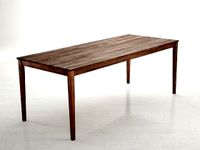
No 2
...no 2
designconnected
sibast no 2 computer generated 3d model. designed by sibast, helge.
turbosquid
$6
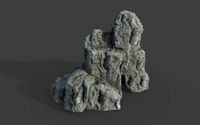
Cliff Rock 2-2
...uid
royalty free 3d model cliff rock 2-2 for download as obj on turbosquid: 3d models for games, architecture, videos. (1619161)
turbosquid
$29
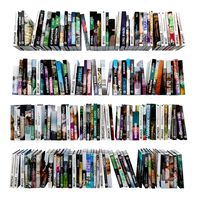
Book variation 2 2
...3d model book variation 2 2 for download as max, obj, and fbx on turbosquid: 3d models for games, architecture, videos. (1366868)
turbosquid
$22

Classic baluster (2) (2)
...assic baluster (2) (2) for download as max, obj, fbx, and stl on turbosquid: 3d models for games, architecture, videos. (1483789)
turbosquid
$99
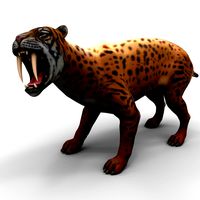
Smilodon 2 Pose 2
... available on turbo squid, the world's leading provider of digital 3d models for visualization, films, television, and games.
turbosquid
$20
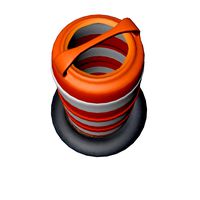
Barrel Barricade 2-2
... available on turbo squid, the world's leading provider of digital 3d models for visualization, films, television, and games.
turbosquid
$6

Wall Trophy (2) (2)
... available on turbo squid, the world's leading provider of digital 3d models for visualization, films, television, and games.
turbosquid
free
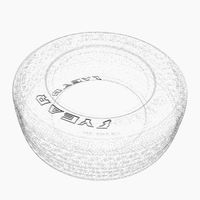
Tire label 2 of 2
... available on turbo squid, the world's leading provider of digital 3d models for visualization, films, television, and games.
3ddd
$1
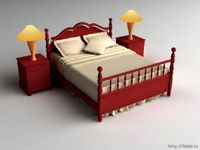
Кровать, 2 тумбочки, 2 светильника
...кровать, 2 тумбочки, 2 светильника
3ddd
кровать, 2 тумбочки, 2 светильника
нормальное качество
формат 3ds max
без текстур
3ddd
free
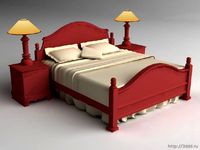
Кровать, 2 тумбочки, 2 светильника
...кровать, 2 тумбочки, 2 светильника
3ddd
кровать, 2 тумбочки, 2 светильника
нормальное качество
формат 3ds max
без текстур
